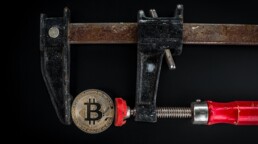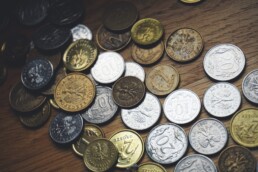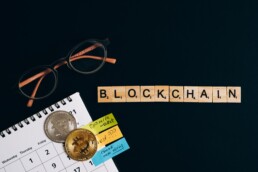Save your bitcoins - Security Rules
Safety first. With crypto, this is imperative.
Lets start from a very important premise. Bitcoin is currently considered a safe system.
The weak point in the use of bitcoin is the user.
the weak point is you.
But this big problem can be solved with careful planning and habits every time you use bitcoin.
Losing your bitcoins means losing access to the wallets where they are stored or sending them to people or exchanges from which we can no longer recover them. Another example of a loss could be considered the theft of the wallet by a criminal.
Always remember that there is no way to delete a transaction on the blockchain, and those Bitcoins sent cannot come back. There is no regulatory autorithy that will protect you from malicious people and get your bitcoins back. Is only your responsibility to protect yourself
But what are the steps to protect yourself.
First of all, a wallet must be created, and this wallet will have a private key. This private key must be keep secret and you must back it up
If you don't know what kind of wallet to open, check out our article on the various types of wallets.
To access this wallet, create a login password. Back up your login password.
Remember that you are not in control of wallets on exchanges, so do not forget funds on exchange unless you are trading. Exchanges are like banks, they own your money but control is in their hands.
For large quantities of bitcoins, it is imperative to use hardware wallets
Make a copy of the wallet's private key and password on a USB stick. Encrypt this key and hide it in a safe place. You can choose to have multiple keys with multiple passwords for the different wallets you are going to create. Obviously you don't have to forget the password otherwise you will lose everything.
Create one or more strong passwords,it means that you have to create password with at least 8 characters, better if there are more. With a mixture of lowercase and uppercase letters, numbers and special characters.
Do not use passwords from other accounts such as email.
A good idea for a password is a sentence made with one or more grammatical errors, or by substituting letters with numbers such as 5 instead of S
the best possible password, however, is a string of characters and numbers and random symbols but it is difficult if not impossible to remember
You can also use a password manager to generate and track passwords
Some hardware wallets require you to use Pin codes, always prefer 8-digit ones over 4-digit ones and don't use dates of birth.
When accessing exchanges, always try to use 2-factor authentication and not SMS. You can check out our 2-Factor Authentication video to learn more. SMS is not recommended because it could be intercepted by a hacker and used to defraud you or empty your wallet.
If you need to access an exchange or your wallet, it is absolutely not recommended to use a public wi fi. Wait until you have a secure line or use a VPN. Much better never to use public wifi.
You have to pay attention to the sites you use and check the emails that come to you. Phising sites and emails are a real threat.
check that you have a secure SSL connection via HTTPS. There are many scams with cloned sites and domains that look the same but that if carefully observed have very small discrepancies from the originals
Another precaution is not to click on the links within the unsecured emails. We can receive emails from the exchanges where we are registered but we must check carefully and if the email seems suspicious, throw it. Obviously never open attachments from these emails. Remember that an exchange email should contain your name, not just Sir or Dear Customer. Another test is to check the real origin of the email.
remember that transactions cannot be canceled or returned.
Precisely for this reason when you send money always check the sending address twice and never write the address manually,
because you will face always complicated address, and if you make a mistake and send money to an address that has nothing to do with it and you never get those coin back.
The security of your Bitcoins is entirely up to you.
Fork
If you've heard of cryptocurrencies or are starting to get interested, then you've easily heard of FORK.
What is a Fork?
A Fork is a split into two different “directions” of the software of a cryptocurrency.
The most famous forks were the Bitcoin forks in 2017 and the Ethereum fork, which led to the creation of Ethereum Classic.
Let's start from basic by explaining the Bitcoin fork.
Bitcoin is made up of its own protocol and blockchain.
Since the protocol has rules written inside that can make its development slow in some parts, some developers may think they can improve their bitcoin by modifying the protocol.
The developers will copy the original BTC protocol and will create the necessary changes to make it work by adding only the improvement developments.
The modified protocol will create a new COIN, which will be incompatible with the BlockChain mined before.
After that it will be decided which block to start the modified protocol from. Some miners will continue to mine with the source protocol, while others will support the modified protocol. This will create two distinct blockchains that are incompatible with each other and consequently an additional coin, separated from this chosen block that will go on independently of each other.
The case we mentioned is called Hard Fork.
It should be noted that there is also a "soft Fork", which does not create a different blockchain but simply implements important software changes but still compatible with the pre-existing BC.
Users of the coin see the results of a hard fork in their wallets as a new coin is created while there are no evident results for a soft fork since this remains the prerogative of the developers. We users will be unaware.
Step 2 - What is a Blockchain?
Blockchain, a term now abused and inserted inappropriately in many contexts because it is cool and makes us feel important.
Sounds like in the early 2000s we heard from our shoemaker who had opened his website and he has no idea about what doing with a website.
But what is a blockchain ? What is his purpose? And why is it useful in some situations?
The BlockChain is a distributed and decentralized digital database, shared on a series of nodes, verifiable by anyone and immutable over time.
It is a digital register, whose entries are grouped into blocks linked together in chronological and sequential order, whose integrity is guaranteed by the use of cryptography
Decentralization is guaranteed by the network of nodes distributed around the world, and each of these has a copy of the database, which is distributed among all nodes in the network. To put it simply, nodes are computers around the world owned by individual enthusiasts or large mining companies.
Each new block addition to the distributed blockchain is globally governed by a shared protocol.
Once the addition of the new block has been authorized, each node updates its private copy with the guarantee of automatically discarding fraudulent or incorrect blocks.
Therefore the information written inside the distributed blockchain, owned by each node will always be visible to everyone and this information will never be changed in the future.
It is practically impossible to change information within a block, the computing power required would be enormous.
Thanks to these characteristics, the blockchain is intrinsically superior to normal databases and central controlled registers, managed even by recognized and regulated authorities.
As with every product, variants are developed and various types have also been developed for the Blockchain, created to meet the various needs of every actor operating in the world.
in detail:
- Public blockchains: Blockchains are open to everyone and accessible to anyone. Each node holds a copy of the database and can participate in the decision-making process regarding the state of the ledger. They are defined as "permissionless". Example: the Bitcoin blockchain
- Private Blockchains: They are closed Blockchains where only one or more pre-selected nodes can perform the function of validating the network. They are defined as "permissioned". Example: the Blockchain of a private foundation or a company
- Mixed Blockchains: They are partly public and partly private Blockchains
- Sidechains: They are blockchains derived from the mother blockchain but connected to it. They are in effect autonomous blockchains on which it is expected that there are coins / tokens different from those circulating on the parent chain but which, if necessary, can "move" from the sidechain to the parent chain and vice versa.
To recognize a blockchain we need to find these elements:
- Transaction (transfer of value from one address to another)
- Block (element that contains transactions)
- Node (element of the network that performs for example mining or validating transactions)
- Peer to peer network (network in which all nodes can communicate with each other)
- Smart contracts that deal with the management, fulfillment, execution and payment of the agreements between the parties
In these days, the blockchain is used practically only for payments and exchange of goods and services.
But we can already speculate that in the future, its usefulness may be much wider.
To date, it is assumed that the blockchain can be used for situations where traceability and information security are required, such as:
- Sharing of health information between different platforms and institutions;
- Schools, academia, training areas, issuing of certificates
- Management of sporting events, demonstrations, Olympics
- Management of betting in general and casinos
- Real estate sales and land registers
- Traceability of non-profit and charitable donations
- Monitoring of guns, ammunition and explosives trade
- Law enforcement and public safety management
- Cybersecurity
- Systems for digital and biometric identification
- Production and sale of diamonds or raw materials
- Insurance and leasing sector
- Wills and inheritance
- Tourism
- Traceability of supply chains
- Certification of works of art
- Transparent online voting, safe from manipulation and fraud
- Banking, finance and investment platforms
- Payment and money transfer systems
- Loyalty cards and gift cards
- Telephony
- Trade and industry
- Automotive sector
Summarizing the Blockchain:
- It is decentralized (it does not have central authorities, everyone can see, use and consult it but no one owns it)
- The protocol is open (in public blockchains)
- Certifies that "something" (a transaction of value, a change of ownership) has taken place. The transaction cannot be censored by a central authority
- A transaction cannot be prohibited, censored or regulated by a sovereign entity (e.g. credit or debit card blocking)
- It is verifiable by anyone (in the traditional financial system, the system controls everyone while in the blockchain ecosystem, everyone controls the system)
- Cannot be tampered or falsifiable (intrinsically safe consensus protocol)
- Solves the problem of double spending
- It is immutable over time. Once a transaction has been validated, it is fixed for "life"
- It is dynamic in the sense that blocks are always added





